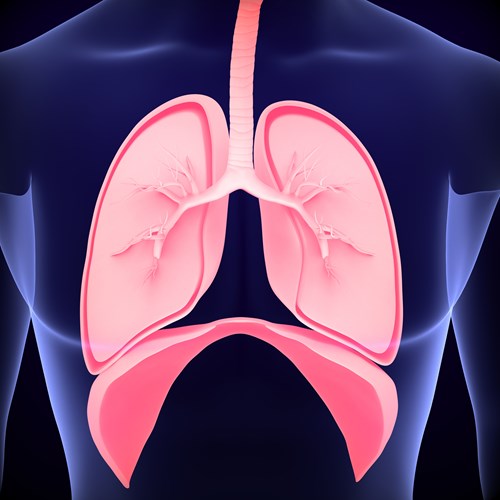All about asthma
Asthma is a common chronic disorder that affects an individual’s airways and causes them to experience breathing difficulties. Breathing difficulties will range in severity, frequency and triggers for every person based on their environmental factors and management of their condition. Sadly, despite asthma being something which can be carefully managed and mostly controlled, asthma attacks kill 3 people in the UK each day.
For someone with asthma, a build-up of mucus and a thickening or swelling of their airway leads to a limitation of airflow in and out of the body. Ongoing inflammation in the airways can also lead to development of scar tissue and “tissue remodelling” in the airway muscles. These combined changes in the airway result in resistance and/or obstructions for a person thus impacting the quality of breathing taking place.

Types of asthma
There are a range of asthma types and knowing which type(s) a person has can help them manage their condition successfully. The types are:
- Allergic asthma; sometimes called atopic asthma, is asthma triggered by allergens like pollen, pets, and dust mites. About 80% of people with asthma have allergies.
- Seasonal asthma; flares up at certain times of the year, such as during hay fever season, or when it’s cold.
- Occupational asthma; caused directly by the type of work a person does. For example, if they work in a bakery, flour dust could trigger symptoms.
- Non-allergic asthma; also known as non-atopic asthma, is asthma that isn’t related to an allergy trigger like pollen or dust. It’s less common than allergic asthma.
- Exercise-induced asthma; About 90% of people with asthma have tightening of the airways caused by exercise.
- Difficult asthma; About 17% of people with asthma have what’s known as difficult asthma or difficult-to-control asthma.
- Severe asthma; About 4% of people with asthma have what’s known as severe asthma. Severe asthma is usually diagnosed and treated in a specialist asthma clinic.
- Brittle asthma; The old-fashioned term brittle asthma is sometimes still used to describe difficult and severe asthma.
- Childhood asthma; Asthma affects around 1.1 million children in the UK. Some children diagnosed with asthma find it improves or disappears completely as they get older.
- Adult-onset asthma; some people are diagnosed with asthma for the first time when they’re an adult. This is known as adult onset asthma or late onset asthma.
Asthma can be triggered in a wide range of ways and often a combination of smaller triggers can be enough to impact the airways and for asthma symptoms to begin. Some factors can be categorised as environmental triggers, including cold temperatures, weather changes, damp, mould, pollen levels, cigarette smoke, dust mites, animal fur and pollution. Triggers related to a person’s body can influence their asthma symptoms, including hormone changes, exercise or physical activity, chest infections, severe emotional reactions (such as panic attacks, laughter or upset), colds and flu. For children, croup and recurrent croup can also be an aggravating factor in increasing their risk of asthma.

What are the signs?
The NHS describe the signs and symptoms of asthma to include:
- a whistling sound when breathing (wheezing)
- breathlessness
- a tight chest, which may feel like a band is tightening around it
- coughing.
Asthma can sometimes get worse for a short time – this is known as an asthma attack. It can happen suddenly, or gradually over a few days. Signs of a severe asthma attack include:
- wheezing, coughing and chest tightness becoming severe and constant
- being too breathless to eat, speak or sleep
- breathing faster
- a fast heartbeat
- drowsiness, confusion, exhaustion or dizziness
- blue lips or fingers
- fainting
How to manage asthma and asthma attacks
For most people with mild asthma, it can be well controlled with use of a preventer inhaler. This is a low dose of a steroid medicine to reduce the inflammation and swelling in the airways. The steroids used are designed to mimic those which our bodies naturally produce.

Although there are some variants available, the most common preventer inhaler is usually brown or beige in colour and is often prescribed to be taken at the start and end of each day. Doctors may recommend that someone uses their preventer more frequently if they are temporarily exposed to a higher level of their triggers (such as cold weather or pollen). Professional and personalised medical advice should always be sought before changing dosage of any medication. Using a spacer is recommended to ensure the dose is inhaled fully and to minimise the risk of thrush developing in the mouth.
For a small proportion of people, asthma symptoms and attacks/flare ups continue despite good managing of their triggers and ensuring correct inhaler technique with high dose inhaled preventers; this is called severe asthma. A regular asthma review would identify this issue and a referral will be made to specialist medical professionals for further exploration.
Everyone with asthma should have an asthma action plan and, for children, this should be shared with all professionals involved with the care of a child. This will detail:
- which medicines to take every day to prevent symptoms and cut the risk of an asthma attack,
- what to do if their asthma symptoms are getting worse,
- the emergency action to take if they’re having an asthma attack and when to call 999.
A reliever inhaler is also frequently prescribed to people who have asthma. This is commonly blue but other variants are also available. This reliever inhaler is used when a person experiences the symptoms of asthma or an asthma attack. It can help to control the symptoms and reduce breathing difficulties quickly.
If you suspect a person is experiencing an asthma attack, take the following steps:
- Sit up the patient up straight so their airways are as open as they can be.
- Try to keep the patient calm and explain what steps you need to take.
- Ensure they are in a warm space which has good airflow. If the weather is cold, take or keep them inside.
- Loosen their clothing around their torso if needed.
- Administer their reliever inhaler as per the prescription instructions.
- If they appear or feel worse at any point, or they do not feel better after taking their reliever inhaler, call 999 or 112 for an ambulance. Follow all additional advice given to you.
- If the ambulance has not arrived after 10 minutes and their symptoms are not improving, repeat step 5.
- If their symptoms are no better after repeating step 5, and the ambulance has still not arrived, contact 999 or 112 again immediately. Follow all additional advice given to you.
- Ensure their medication, asthma action plan (or Health Care Plan) and any medicine administration forms are taken to the hospital with the patient.
About 1 in 6 people treated in hospital for an asthma attack need hospital care again within 2 weeks so ensure they are closely monitored after their asthma attack, further reducing exposure to triggers wherever possible.